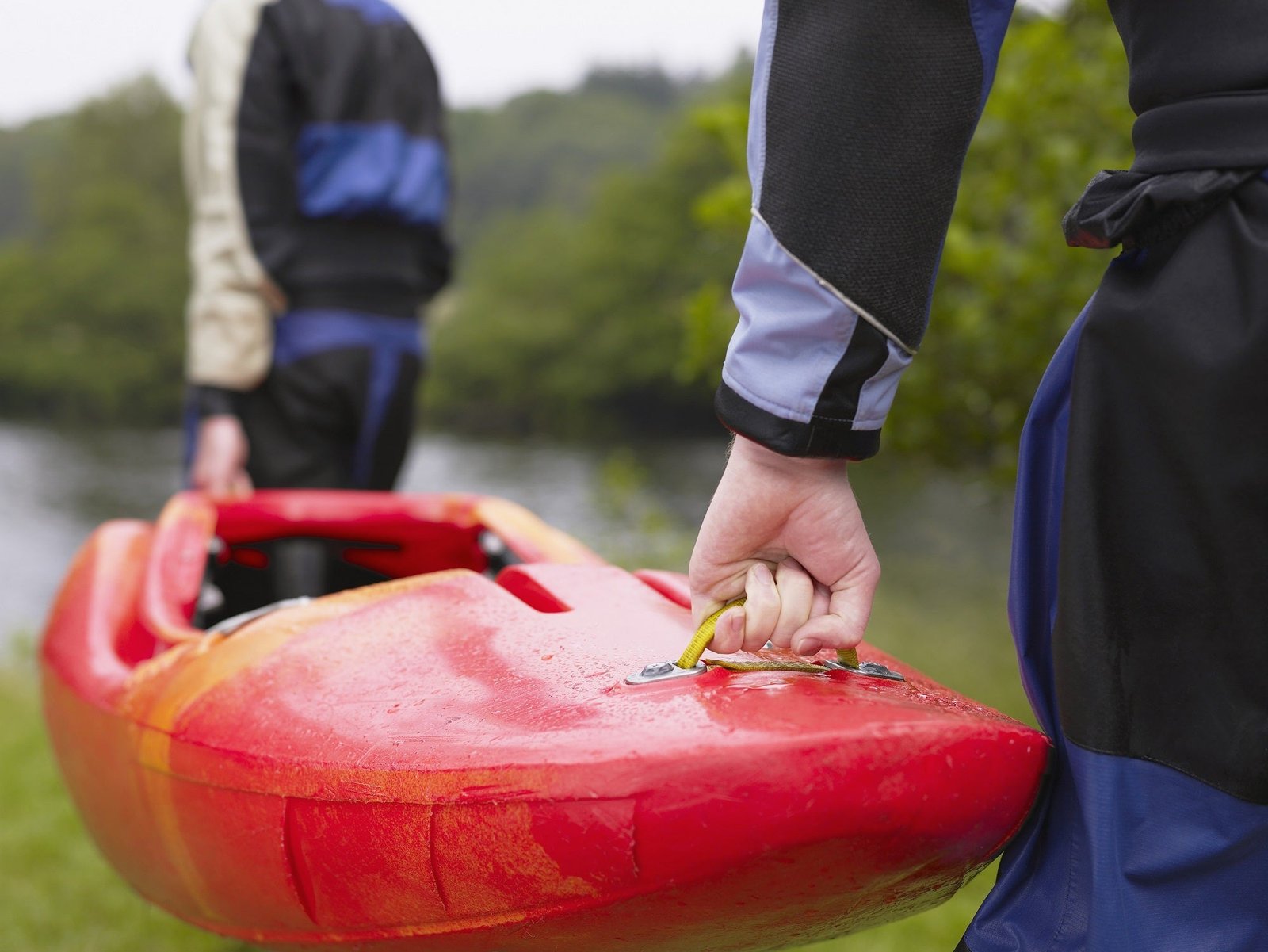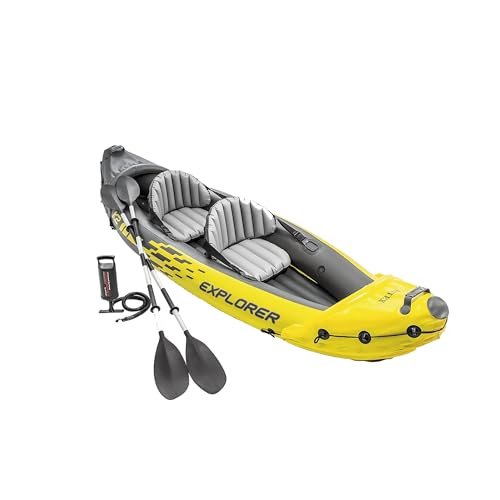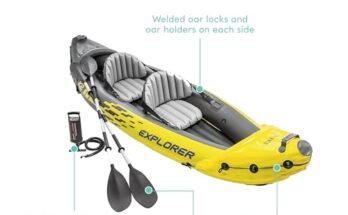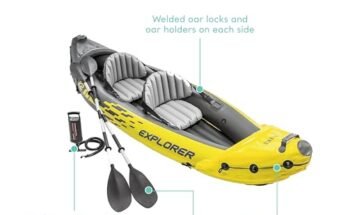Have you ever wondered why kayaks come with weight limits? It’s not just a random number printed on the side.
Your kayak’s weight limit is crucial for your safety, comfort, and overall fun on the water. Ignoring it can lead to tipping over, poor performance, or even damage to your kayak. You’ll discover exactly why these limits exist and how they affect your kayaking experience.
Keep reading to make sure you get the most out of every paddle stroke without risking your safety.
Purpose Of Weight Limits
Kayaks have weight limits to keep paddlers safe. These limits show the maximum weight the kayak can hold.
Weight limits include the paddler, gear, and any extra items. Staying within these limits helps the kayak work well.
Impact On Stability
Weight limits help keep the kayak stable in water. Too much weight makes the kayak sit lower and feel wobbly.
When a kayak is overloaded, it may tip easily. Proper weight keeps the kayak balanced and safe to use.
Effect On Performance
A kayak with the right weight limit moves faster and uses less effort. Extra weight slows it down and makes paddling hard.
Too much weight changes how the kayak handles turns and waves. Following weight limits helps the kayak perform as designed.
Manufacturer Guidelines
Manufacturers set weight limits based on kayak design and materials. These limits keep users safe and protect the kayak.
Ignoring guidelines may cause damage or accidents. Always check and follow the kayak’s weight limit before use.
Safety Risks Of Overloading
Kayaks have weight limits to keep paddlers safe on the water. Overloading a kayak can cause serious safety problems. It is important to understand these risks before you go kayaking.
Carrying too much weight affects how the kayak handles. This can lead to accidents and injuries. Knowing the dangers helps you avoid trouble while paddling.
Capsizing Hazards
When a kayak is overloaded, it sits lower in the water. This reduces stability and makes capsizing more likely. Water can enter the kayak, making it hard to stay afloat.
- Lower freeboard allows waves to splash in
- Balance becomes harder to maintain
- Recovery after tipping becomes difficult
Reduced Maneuverability
Extra weight slows down the kayak and makes steering tough. This can cause trouble in rivers or rough water. Paddlers may not react quickly to avoid obstacles.
| Effect | Impact on Kayak |
| Slower response | Harder to turn and steer |
| Less speed | More effort needed to paddle |
| Poor tracking | Drifts off course easily |
Increased Fatigue
Carrying too much weight makes paddling harder. This causes faster muscle tiredness and exhaustion. Tired paddlers are more likely to make mistakes or fall overboard.
Tips to reduce fatigue:
- Stay within weight limits
- Take regular breaks
- Use proper paddling technique
- Bring only essential gear
How Weight Limits Are Determined
Kayak weight limits help keep paddlers safe and protect the kayak. These limits show how much weight a kayak can hold without sinking or tipping.
Experts use several ways to find the right weight limit for each kayak model. These include studying materials, testing, and looking at how weight spreads out.
Materials And Design Factors
The type of material used affects a kayak’s strength and weight limit. Stronger materials can hold more weight without breaking.
Design also plays a big role. Kayaks with wide, stable shapes hold more weight. The thickness and shape of the hull matter too.
- Polyethylene plastic is common and durable but heavier.
- Fiberglass is lighter but needs careful design for strength.
- Wider kayaks offer better balance and higher weight limits.
- Hull shape affects how weight spreads and stability.
Testing Procedures
Manufacturers test kayaks by adding weight until they reach limits. They check if the kayak stays stable and floats well.
Tests include placing weights inside and on top of the kayak. These tests help find a safe weight limit with a safety margin.
- Static load tests add weight slowly to check balance.
- Dynamic tests simulate real paddling conditions.
- Water tests ensure the kayak does not sink or tip.
- Safety margins keep users below risky weight levels.
Load Distribution Considerations
How weight spreads inside the kayak changes its stability. Uneven weight can cause tipping or sinking even under the limit.
Designers consider where paddlers sit and where gear is stored. Proper load distribution helps keep the kayak balanced and safe.
- Weight should be centered for better balance.
- Heavy gear goes low and near the middle.
- Uneven loads can reduce the effective weight limit.
- Proper load helps kayaks perform well on water.

Choosing The Right Kayak
Kayaks come with weight limits to ensure safety and performance. Picking a kayak that fits your weight and needs is important. This guide helps you understand how to choose one.
Knowing about weight limits helps you avoid problems like sinking or poor handling. It also helps you carry your gear safely.
Matching Weight Capacity To User
Each kayak has a maximum weight it can hold. This includes your body weight and anything you bring along. Staying within this limit keeps the kayak stable and easy to paddle.
- Check the kayak’s weight capacity before buying.
- Include your weight plus clothes and personal items.
- Do not overload the kayak to avoid capsizing.
Considering Gear And Supplies
Gear and supplies add extra weight to the kayak. You need to plan what to take without going over the limit. This keeps your ride safe and comfortable.
| Item | Average Weight (lbs) |
| Paddle | 5 |
| Life Jacket | 3 |
| Dry Bag | 10 |
| Water Bottle | 2 |
| Extra Clothes | 4 |
Types Of Kayaks And Their Limits
Different kayaks have different weight limits. Sit-on-top kayaks usually hold more weight than sit-inside kayaks. Fishing kayaks tend to have the highest limits.
- Sit-Inside Kayak: Best for protection, lower weight limit.
- Sit-On-Top Kayak: Easier to get on, higher weight limit.
- Fishing Kayak: Designed for heavy gear and higher weight.
Tips For Safe Kayaking
Kayaking is fun and healthy. Staying safe helps you enjoy the water more.
Knowing how to load your kayak, check your gear, and watch the water is key.
Proper Loading Techniques
Keep your kayak balanced by placing weight evenly. Avoid putting too much weight in one spot.
- Place heavy items low and near the center
- Distribute gear to keep the kayak stable
- Do not overload beyond the kayak’s weight limit
- Secure all items to prevent shifting
Regular Equipment Checks
Check your kayak and gear before every trip. Look for cracks, leaks, or worn parts.
| Equipment | What to Check | Why |
| Kayak Hull | Cracks or holes | To prevent leaks |
| Paddle | Handle and blade condition | For better control |
| Life Jacket | Fit and straps | For safety in water |
| Spray Skirt | Elastic and seams | To keep water out |
Adapting To Water Conditions
Water changes fast. Adjust your plans and gear to fit the conditions you face.
Tips for adapting:
- Check weather and water reports before kayaking
- Wear clothing for the water temperature
- Reduce gear weight if water is rough
- Stay close to shore in fast currents


Frequently Asked Questions
Why Do Kayaks Have Weight Limits?
Kayaks have weight limits to ensure safety, stability, and performance. Exceeding limits can cause sinking or capsizing. Weight limits help manufacturers design kayaks that handle specific loads effectively. Staying within limits improves paddling efficiency and reduces wear and tear on the kayak.
How Do Weight Limits Affect Kayak Stability?
Weight limits directly impact kayak stability by maintaining proper buoyancy. Overloading reduces freeboard, increasing the chance of tipping. Staying within weight limits ensures the kayak sits correctly in water, providing better balance and control. This makes paddling safer and more enjoyable.
Can Exceeding Weight Limits Damage Kayaks?
Yes, exceeding weight limits can damage kayaks. Overloading strains the hull and seams, causing cracks or leaks. It also reduces maneuverability and increases stress on materials. Following weight limits preserves kayak integrity and extends its lifespan.
Are Weight Limits The Same For All Kayaks?
No, weight limits vary by kayak type and design. Sit-on-top kayaks often have higher limits than sit-inside models. Factors like material, length, and width influence capacity. Always check the manufacturer’s specifications before use to ensure safety.
Conclusion
Kayak weight limits protect both the paddler and the kayak. Staying within limits keeps the kayak stable and safe. Overloading can cause tipping or damage. It also affects how the kayak moves on water. Choosing the right kayak size matters for comfort and control.
Always check the weight limit before buying or using. Safe kayaking means knowing and respecting these limits. Enjoy your time on the water without worry or risk. Simple rules make paddling fun and secure.



